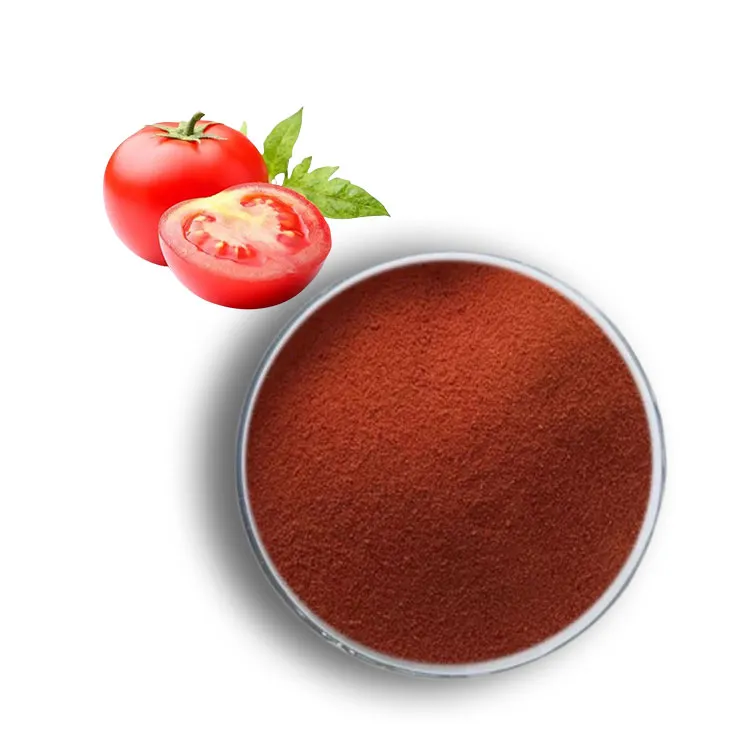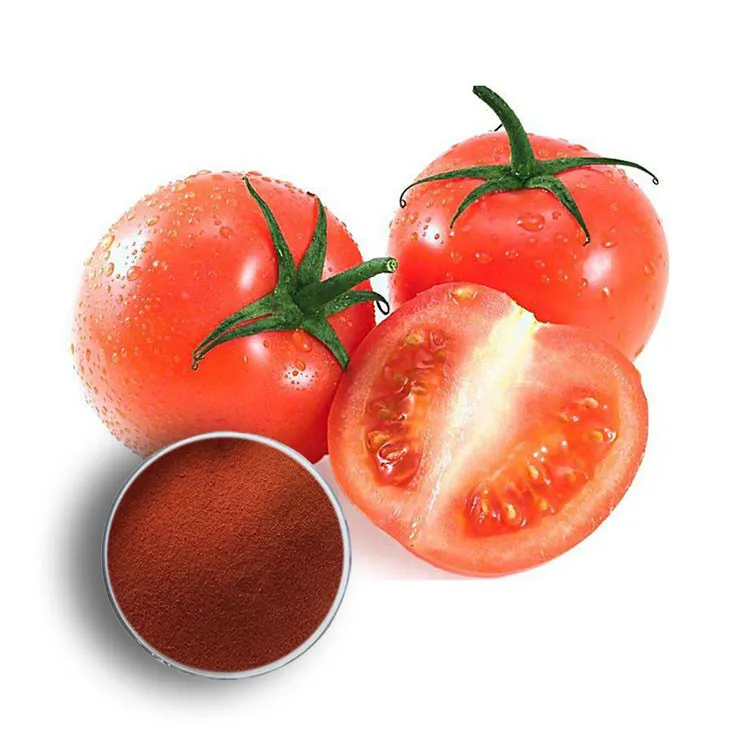- 0086-571-85302990
- sales@greenskybio.com
Supercritical Carbon Dioxide Extraction of Lycopene.
2024-11-30

1. Introduction
Lycopene is a carotenoid pigment that is predominantly found in tomatoes. It has been the focus of much research due to its significant health benefits for humans. Lycopene is a powerful antioxidant that can help in reducing the risk of various diseases such as cancer and heart diseases. As a result, there is a growing demand for its extraction from natural sources in a pure and concentrated form. Supercritical carbon dioxide extraction has emerged as a very promising method for obtaining Lycopene.

2. Properties of Lycopene
Lycopene is a lipophilic compound, which means it has an affinity for lipids or fats. It is responsible for the red color in tomatoes and other fruits. In its natural form, it is present in the chromoplasts of plant cells. Lycopene has a unique chemical structure that gives it antioxidant properties. It can scavenge free radicals in the body, which are unstable molecules that can cause damage to cells and DNA.

3. The Concept of Supercritical Carbon Dioxide
3.1 Supercritical State
Carbon dioxide (CO₂) can exist in different states depending on temperature and pressure. When it is above its critical temperature (31.1°C) and critical pressure (73.8 bar), it enters the supercritical state. In this state, CO₂ has properties that are intermediate between those of a gas and a liquid. It has a high diffusivity like a gas, which allows it to penetrate quickly into the material being extracted. At the same time, it has a density similar to that of a liquid, which enables it to dissolve substances effectively.
3.2 Advantages as an Extraction Medium
There are several reasons why supercritical CO₂ is an excellent medium for lycopene extraction. Firstly, it is a non - toxic and non - flammable gas, which makes it a safe option compared to many organic solvents. Secondly, as mentioned before, its high diffusivity and low viscosity in the supercritical state allow it to efficiently penetrate the tomato matrix. This is crucial for reaching the lycopene molecules that are trapped within the plant cells. Thirdly, supercritical CO₂ extraction can be carried out at relatively low temperatures, which helps in preserving the integrity of the lycopene molecule. High - temperature extraction methods can sometimes cause degradation of the lycopene.

4. The Supercritical Carbon Dioxide Extraction Process
4.1 Preparation of the Tomato Material
The first step in the extraction process is the preparation of the tomato material. Tomatoes are typically washed, sorted, and then either used whole or processed into a paste or powder form. This is important as it affects the surface area available for extraction. A larger surface area generally leads to more efficient extraction. For example, if tomatoes are made into a fine powder, the supercritical CO₂ can access the lycopene more easily.
4.2 Extraction Conditions
The extraction conditions such as temperature, pressure, and extraction time need to be carefully optimized. The temperature is usually maintained in the range of 40 - 60°C to ensure that the CO₂ remains in the supercritical state and also to avoid excessive heat damage to the lycopene. The pressure is typically set between 150 - 300 bar. These values can vary depending on the specific characteristics of the tomato material and the desired purity of the lycopene extract. The extraction time also plays a role, and it can range from 1 - 6 hours. Longer extraction times may increase the yield of lycopene, but it also needs to be balanced to avoid over - extraction of other unwanted components.
4.3 Separation of Lycopene
After the extraction process, the next step is to separate the lycopene from the supercritical CO₂. This is usually done by reducing the pressure, which causes the CO₂ to return to its gaseous state, leaving behind the lycopene. The separated lycopene can then be further purified if needed. For example, it can be subjected to chromatography techniques to remove any remaining impurities.
5. Comparison with Traditional Extraction Methods
5.1 Solvent Extraction
Traditional solvent extraction methods often use organic solvents such as hexane or ethyl acetate. One of the major drawbacks of these methods is the risk of solvent residue in the final product. These solvents can be toxic and may pose a health risk if not completely removed. In contrast, supercritical CO₂ extraction significantly reduces the risk of contamination by residual solvents as CO₂ is easily removed by simply reducing the pressure. Moreover, solvent extraction may require more complex and time - consuming purification steps to remove the solvent.
5.2 Soxhlet Extraction
Soxhlet extraction is another commonly used method for extracting lycopene. However, this method is often time - consuming and may require a large amount of solvent. It also operates at relatively high temperatures, which can lead to the degradation of lycopene. Supercritical CO₂ extraction, on the other hand, can be carried out at lower temperatures and is more efficient in terms of both time and yield.
6. Quality and Purity of the Extracted Lycopene
The lycopene obtained through supercritical CO₂ extraction is of high quality and purity. Since the extraction process is relatively gentle and can be precisely controlled, the lycopene molecule is less likely to be damaged or degraded. The purity of the extracted lycopene can be further enhanced through proper separation and purification techniques. High - purity lycopene is more desirable for applications in the food, pharmaceutical, and cosmetic industries. For example, in the pharmaceutical industry, pure lycopene can be used in the development of dietary supplements or drugs for treating certain diseases related to oxidative stress.
7. Industrial Applications and Future Prospects
7.1 Food Industry
In the food industry, lycopene is used as a natural colorant and antioxidant. It can be added to various food products such as juices, sauces, and processed meats. Supercritical CO₂ - extracted lycopene is a preferred choice due to its high purity and safety. It can enhance the color and nutritional value of food products without the risk of introducing harmful solvents.
7.2 Pharmaceutical Industry
The pharmaceutical industry is increasingly interested in lycopene for its potential health benefits. As a powerful antioxidant, it can be used in the development of drugs and supplements for preventing and treating diseases. Supercritical CO₂ extraction provides a reliable method for obtaining high - quality lycopene for pharmaceutical research and production.
7.3 Cosmetic Industry
Lycopene is also used in the cosmetic industry for its antioxidant properties. It can be incorporated into skin care products such as creams and lotions to protect the skin from oxidative damage. The pure and high - quality lycopene obtained through supercritical CO₂ extraction is well - suited for these applications.
7.4 Future Prospects
The future of supercritical CO₂ extraction of lycopene looks very promising. As research continues, the extraction process is likely to be further optimized in terms of yield, efficiency, and cost - effectiveness. There is also potential for the development of new applications of lycopene in other industries. Moreover, with the increasing demand for natural and green extraction methods, supercritical CO₂ extraction is expected to gain more popularity in the coming years.
FAQ:
What are the advantages of using supercritical carbon dioxide for lycopene extraction?
Supercritical carbon dioxide has a high diffusivity and low viscosity in the supercritical state. This allows it to penetrate well into the tomato matrix for efficient lycopene extraction. It also yields a more concentrated and pure lycopene and reduces the risk of contamination by residual solvents. Moreover, it is in line with green extraction technologies.
Why is lycopene important for human health?
Lycopene is abundant in tomatoes. It has antioxidant properties which can help protect cells from damage, potentially reducing the risk of certain diseases and contributing to overall well - being.
How does supercritical carbon dioxide penetrate the tomato matrix?
In its supercritical state, carbon dioxide has properties such as high diffusivity and low viscosity. These properties enable it to move easily through the tomato matrix, reaching the lycopene and extracting it effectively.
Is supercritical carbon dioxide extraction cost - effective for lycopene?
While the initial setup for supercritical carbon dioxide extraction may require some investment in equipment, in the long run, it can be cost - effective. The high purity of the extracted lycopene, reduced solvent waste management costs (since it reduces the need for dealing with residual solvents), and the potential for large - scale production can contribute to overall cost - effectiveness.
What are the challenges in supercritical carbon dioxide extraction of lycopene?
Some challenges include the need for precise control of the supercritical conditions (pressure, temperature etc.). Also, optimizing the extraction process to ensure maximum yield of lycopene while maintaining its quality can be difficult. Equipment maintenance for supercritical extraction can also be relatively complex and costly.
Related literature
- Supercritical Fluid Extraction of Lycopene from Tomato Waste: Process Optimization and Kinetic Modeling
- Supercritical Carbon Dioxide Extraction of Lycopene - Rich Fractions from Tomato by - Products
- Enhanced Extraction of Lycopene from Tomatoes using Supercritical Carbon Dioxide and Co - solvents
- ▶ Hesperidin
- ▶ citrus bioflavonoids
- ▶ plant extract
- ▶ lycopene
- ▶ Diosmin
- ▶ Grape seed extract
- ▶ Sea buckthorn Juice Powder
- ▶ Beetroot powder
- ▶ Hops Extract
- ▶ Artichoke Extract
- ▶ Reishi mushroom extract
- ▶ Astaxanthin
- ▶ Green Tea Extract
- ▶ Curcumin Extract
- ▶ Horse Chestnut Extract
- ▶ Other Problems
- ▶ Boswellia Serrata Extract
- ▶ Resveratrol Extract
- ▶ Marigold Extract
- ▶ Grape Leaf Extract
- ▶ blog3
- ▶ blog4
-
The best yohimbe bark extract on the market.
2024-11-30
-
Standard - process Mulberry Leaf Extract.
2024-11-30
-
100% Pure Natural White Willow Bark Extract.
2024-11-30
-
The Best Method for Extracting Vitamin D3.
2024-11-30
-
Chinese Lycopene Powder Factories.
2024-11-30
-
Coix Seed Extract
2024-11-30
-
Dandelion Leaf Extract
2024-11-30
-
Plantain extract
2024-11-30
-
Eucommia Ulmoides Extract
2024-11-30
-
Curcumin
2024-11-30
-
Quercetin
2024-11-30
-
American Ginseng Root Extract
2024-11-30
-
Baicalin
2024-11-30
-
Alfalfa Meal
2024-11-30
-
Lemon Balm Extract
2024-11-30





















